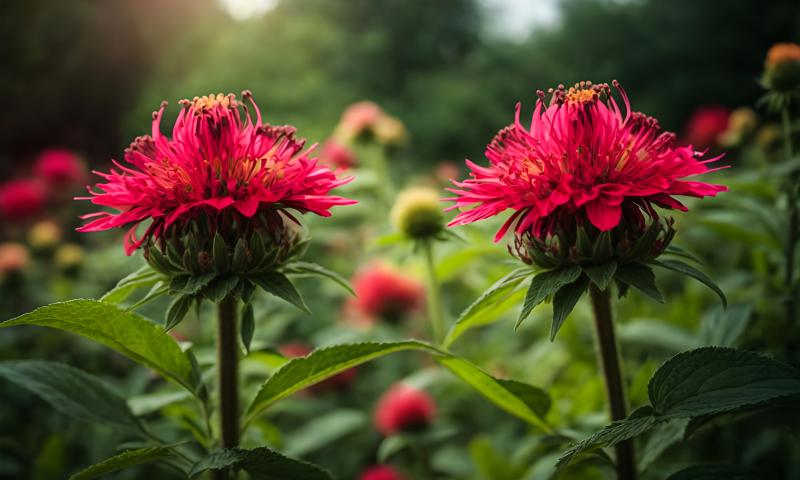 />
/>
Monarda Fistulosa, commonly known as wild bergamot or bee balm, is a perennial herb native to North America. It is part of the mint family, Lamiaceae, and is prized for its aromatic leaves and distinctive lavender flowers. This article explores the botanical characteristics, chemical composition, habitat, taste, historical facts, and general health benefits of Monarda Fistulosa.
Botanical Characteristics
Monarda Fistulosa typically grows to heights of two to four feet and thrives in well-drained soils. The plant features a square stem typical of the mint family and branched clusters of tubular, lavender to pink flowers that bloom from early summer to late autumn. Its leaves are lance-shaped, serrated, and oppositely arranged along the stem.
Chemical Composition
The chemical profile of Monarda Fistulosa is rich with volatile oils, primarily consisting of thymol, which is also a major component in thyme. Other constituents include carvacrol, menthone, and geraniol. These compounds are responsible for the plant's strong fragrance and various properties that have been explored for wellness benefits.
Habitat
Wild bergamot is primarily found in prairies, meadows, and forest edges across North America. It prefers sunny locations with dry to average moisture soils. Its resilience and attractive flowers make it a popular choice for native plant gardens and restoration projects.
Taste
The leaves of Monarda Fistulosa have a complex flavor profile that can be described as a mix of mint and oregano with hints of citrus. This unique taste makes it a favorable herb in culinary applications, especially in teas and as a seasoning for meats and other dishes.
Historical Facts
Historically, Monarda Fistulosa has been used by various Native American tribes for its medicinal properties and as a seasoning for food. European settlers adopted its use as a tea, especially during the period when imported tea was heavily taxed, leading up to the Boston Tea Party.
General Health Benefits and Indications for Use
Monarda Fistulosa is appreciated for its general wellness benefits. The presence of thymol and other volatile oils contributes to its use as a herbal remedy to support general health. The herb is also used in aromatherapy for its soothing and relaxing properties. Additionally, it has been traditionally used to support digestive health.
FDA Compliance
While discussing the benefits of Monarda Fistulosa, it is important to comply with FDA guidelines, which recommend not attributing to dietary supplements the property of preventing, treating, or curing diseases. Therefore, the health benefits mentioned are intended for general wellness support without specific therapeutic claims.
Conclusion
Monarda Fistulosa is a versatile and beneficial herb with a rich history and numerous applications. From its pleasant aesthetic in native gardens to its use in herbal teas, Monarda continues to be a valued plant in various circles for its general wellness benefits. As always, when considering any herb for health purposes, consulting with a healthcare provider is recommended.
